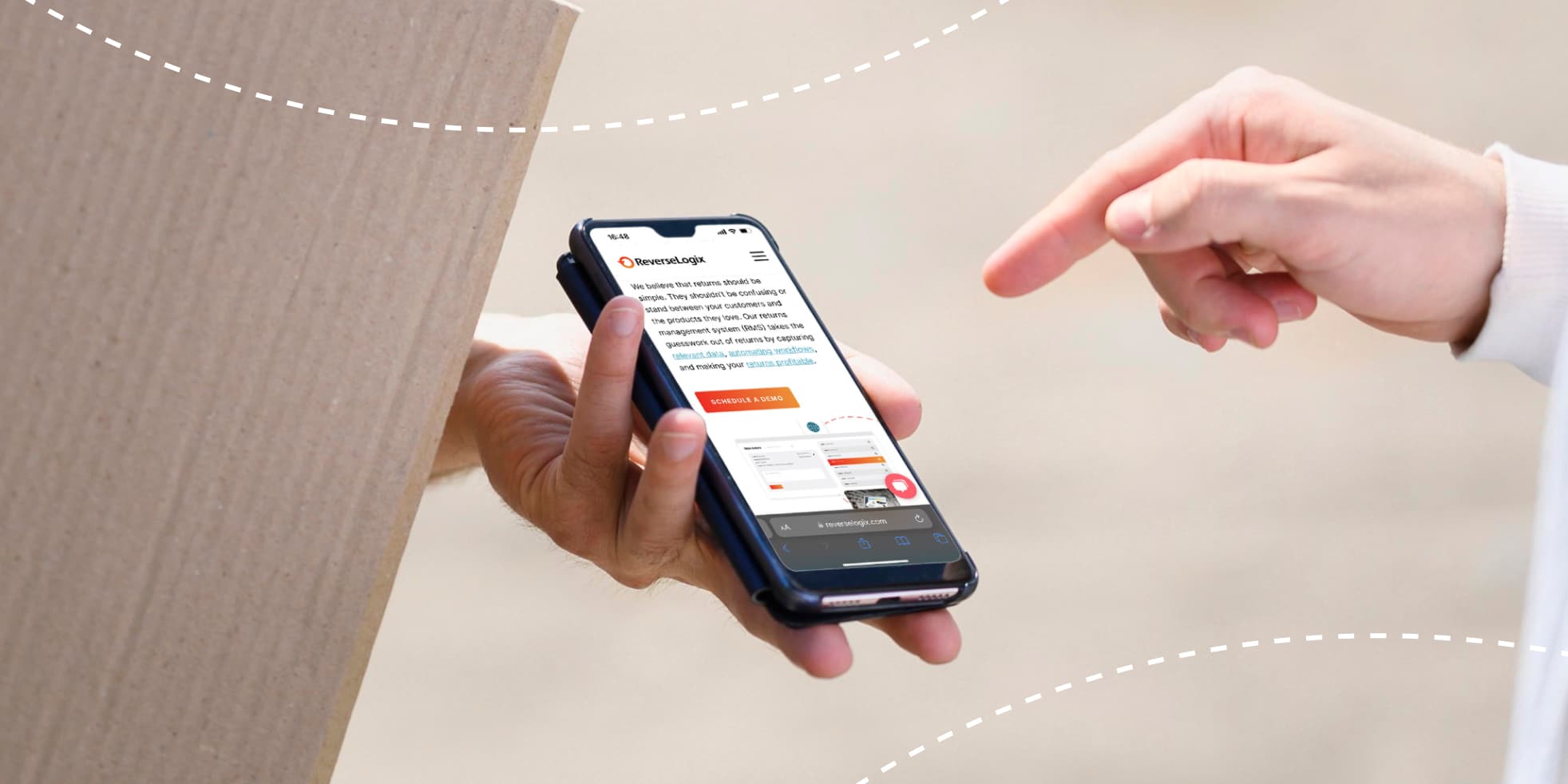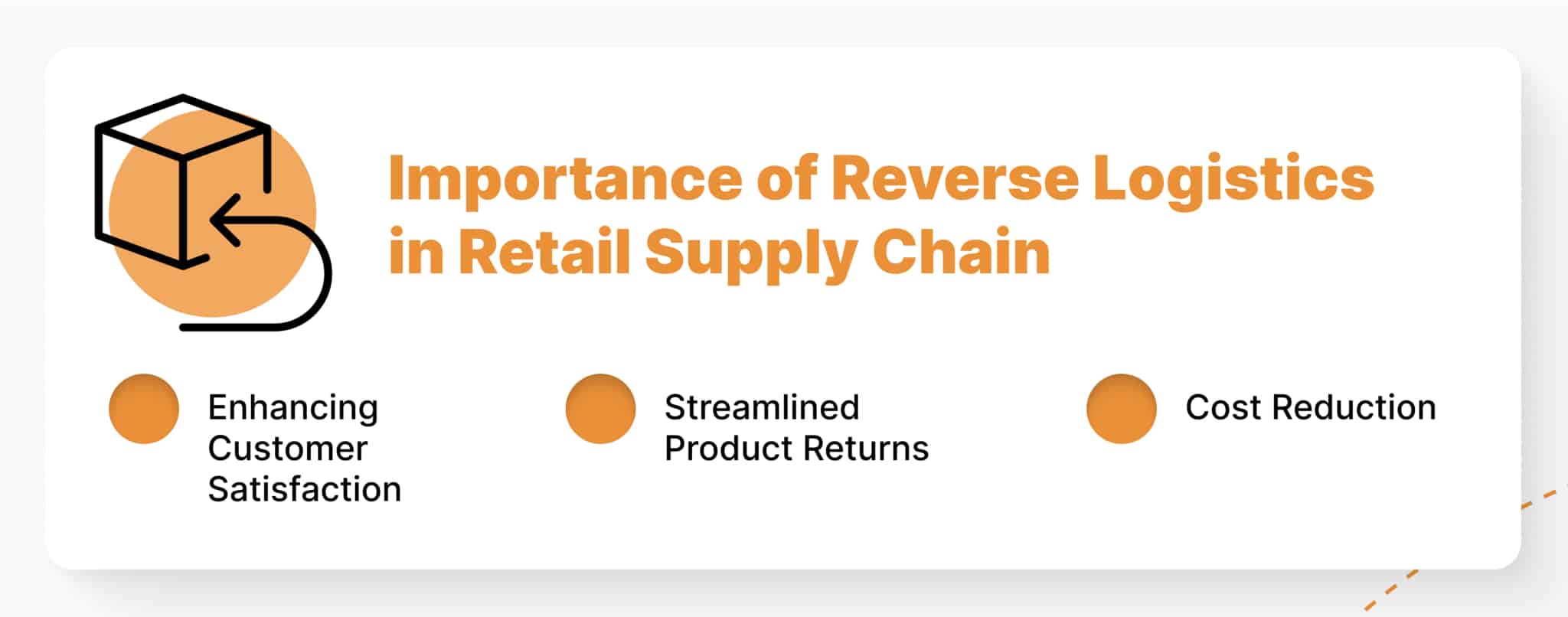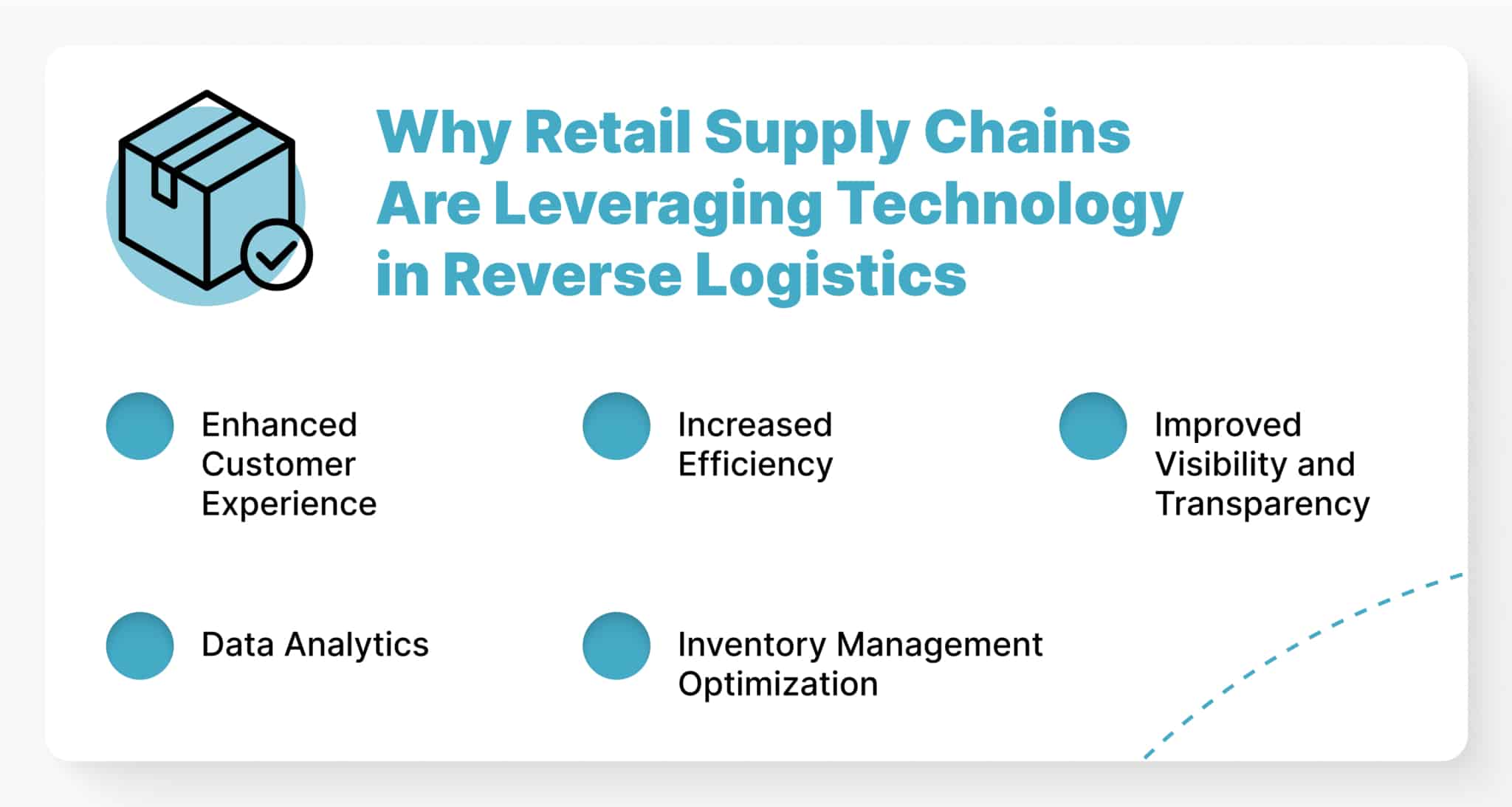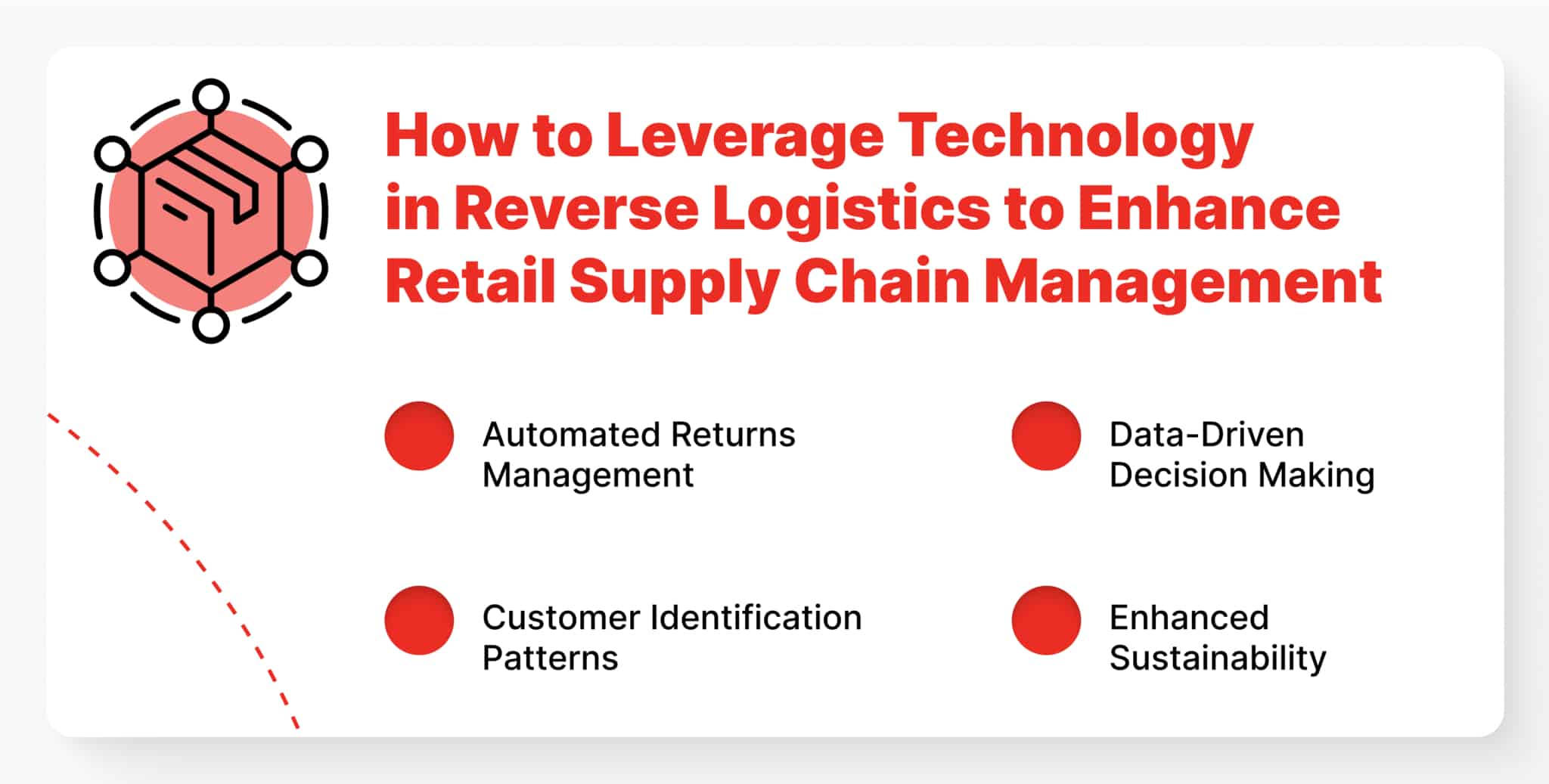Enhancing Retail Supply Chains: The Impact Of Leveraging Technology In The Reverse Logistics Operation

Shying away from leveraging technology in reverse logistics will only become more dangerous for retail supply chains, especially as the world continues to change and embrace the strategy more.
Few strategies are as important in retail supply chain management as reverse logistics, especially in this e-commerce boom. Because of the error (whether it is because of the customers or because of the retail business), many of these operations entail product returns. And in a world where competition is rife and customer demands are ever-changing, reverse logistics is here to stay.
However, the work doesn’t stop at setting a reverse logistics structure. In today’s business climate, supply chains are at war with each other. Win in your supply chain, and you can win the market. Of course, regarding modern supply chains (retail or otherwise), one tool rules them all—technology. Retail businesses have leveraged technology for over two decades to streamline and enhance their supply chains. It only makes sense that they want to do the same with their reverse logistics operation.
For many retail supply chains, the question is no longer why. They want to know how they can leverage technology in the reverse logistics process and how this can help enhance their overall supply chain. This article will answer these questions.
Importance of Reverse Logistics in Retail Supply Chain
Which would you rather be, the first or the correct one? Well, retail supply chains prefer the former. This is why they mostly favor the fast model. It means that businesses are much more interested in getting the goods to the customer, and then they can deal with the consequences later. This is why reverse logistics is so necessary.

Enhancing Customer Satisfaction
In retail supply chain management, customer satisfaction can mean the difference between profitability and shutting down operations. You don’t want to be on the wrong side of the customers. And product returns are one of the best strategies for keeping them happy. For instance, a customer thinks she is a size 8, but in reality, she is a size 10.
When she orders a size 10 and finds out that it is not her size after all, do you insist she keep it, or would you be so gracious as to help her change it? Better yet, which of those options will make her happy and loyal to your brand? You see, when you meet customer demand, you have more sales to make, plus you can get back the original item and then resell it. Everyone wins, but you win two times. This is the essence of reverse logistics.
Streamlined Product Returns
Product returns can be quite messy. And it can get quite a lot, especially in certain seasons. When you consider the amount of inventory involved, finding a strategy that ties it all together while streamlining the process becomes quite prudent. This is where reverse logistics comes into play again. As a supply chain strategy, it helps simplify the product return process and helps the supply chain better understand its inventory management. Typically, this entails goods in transit and those that are already in the system.
Cost Reduction
Retailers who run an effective reverse logistics strategy can manage their refurbishment, resale, and disposal more efficiently. They do this by leveraging the strategy to streamline the return process, consolidate shipments, and optimize transportation routes. Ultimately, this leads to lower costs and better use of available resources.
Why Retail Supply Chains Are Leveraging Technology in Reverse Logistics
Technology is a great tool for inbound and outbound logistics. For instance, it takes care of repetitive tasks, which allows the supply chain to focus on more essential or critical aspects of their operation. For retail supply chains leveraging technology in their reverse logistics operations, here are what they can expect:

Enhanced Customer Experience
Again, the retail supply chain is all about the customer. With technology, these supply chains can provide their customers with more streamlined and easy-to-use platforms that allow them to easily initiate the product return process from the comfort of their devices.
With tech, retail businesses can provide customers with real-time information on the status of their returned goods, whether the system will accept them or not, and in cases when the returned products are rejected, enough information about the reason is provided on the same platform. It helps promote transparency for the customer.
Increased Efficiency
With technology, retail supply chains can better manage reverse logistics operations. This includes big logistics management issues like better route management and resource management. In many cases, these supply chains can use the same infrastructure for delivery and pick-up. However, without the application of technology, it can get quite complicated.
Improved Visibility and Transparency
Technology has made tracking tools like GPS and route planning & optimization software available. These are quite impactful and help retail supply chains better track and stay up-to-date with their reverse logistics management. With up-to-date information on the location and ETA of the deployed vehicles, they can effectively plan and streamline supply chain operations for better outputs. It basically helps you build a more resilient supply chain.
Data Analytics
Data is a key component of modern supply chain management. It allows the system to better understand how effective the operation is and possible areas for improvement. The same applies to retail supply chains and their reverse logistics operations.
With technology, they can analyze data to identify fraud, shortcomings, possible waste, and, in many cases, why and what customers are returning. With effective data analysis, retail supply chains can prevent a world of trouble and enhance efficiency in their reverse logistics operations.
Inventory Management Optimization
With technology, retail supply chains can quickly track and streamline their inventory management. It allows the supply chain to track the status of returned goods, such as those that are to be resold, refurbished, and disposed of. It also allows them to make better decisions on retail store inventory, such as what to restock, which can be quite helpful for avoiding the overstocking or understocking trap. Learn about how inventory analysis techniques can help improve your management of inventory.
How to Leverage Technology in Reverse Logistics to Enhance Retail Supply Chain Management
We know that technology is a vital tool in reverse logistics, especially for retail supply chains. However, leveraging it or getting it right can be quite complicated. This is why we are answering the “how” in this section. Here, we compiled some of the strategies that will help.

Automated Returns Management
Automated returns management works for customers as well as the business or retail supply chain using it. On the front end, it helps the customer initiate the return process and provides them with real-time information on the status of their returned products. However, it is more key for the supply chain. With the ARM, you don’t have to worry about authorizing returns, generating shipping labels, or following up with customers about the process.
The entire process can be simplified, down to the sorting and inspecting of the returned products. Big retail supply chains can deploy robotics that sort and allocate resources based on the nature, condition, and category of the product.
Data-Driven Decision Making
Decision making is part of the retail supply chain and reverse logistics process. But imagine you can make those decisions with accurate data rather than just gut feeling or guessing games. The productivity of your supply chain will skyrocket, and you can save cost on fuel efficiency and wear and tear of the vehicle. It will also improve time management and demand forecasting, which are big factors for most supply chains across the globe today.
Customer Identification Patterns
As we explained earlier, the entire process is streamlined with technology so customers can initiate product returns themselves. This way, the supply chain spends less time and resources taking calls or orders from customers about it. However, the tech application can do much more than this. It can tell the supply chain about the customer’s return pattern or post purchase behaviors. These will usually entail: what they tend to return, why they return, and what type of conditions the products are typically in.
With this information, your entire supply chain can better handle the product return management process. You can decide to discontinue the product or make improvements so that customers stop returning it. You can also use the tech application to understand other aspects of customer behaviors, including how customers approach purchasing decisions. All of these can help you tweak and adjust the supply chain to be better and more efficient. For instance, if the customers get the right goods in the right conditions, product returns tend to reduce drastically.
Enhanced Sustainability
In a supply chain climate that prioritizes sustainability, retail supply chains cannot possibly overlook it. And with reverse logistics, logistics operations tend to expand exponentially. Considering the fuel usage and increased use of trucks on the roads, it is not far-fetched to see how the process can be detrimental to the environment. To curb that, technology will come in handy. Tools like route optimization software and investing in electric vehicles can help reduce the impact of logistics on the environment.
How ReverseLogix Can Help Retail Supply Chains Leverage Technology in Their Reverse Logistics Operations
Although product return management is a complex process, reverse logistics operations can sometimes become a bundle of complications. This is especially true in big reverse logistics and supply chain operations. This is where ReverseLogix shines the best. ReverseLogix is the complete return management solution. With ReverseLogix, you can set up return processing, initiate returns, and even manage repairs. All from the comfort of one platform.
Here are some of our solutions that will help you simplify and increase the efficiency of your reverse logistics operations:
Automate Return Operations: With our automated return operations, you can create branded portals that allow for easy and self-service, reduce errors, process returns faster, and improve overall efficiencies.
Improving Customer Experience for Online Returns: Your customers will return sometimes. You might as well have a return process that keeps them coming back. You can have easy exchanges, instant crediting, and flexible initiations.
Better Sustainability: Smarter returns lead to a better logistics impact on the environment. With ReverseLogix, you have better data analytics tools that ensure you can plan and streamline your operations effectively.
Implementing a reverse logistics solution is one thing. It is another to do it effectively. View our pricing plans or request a demo with our team to learn more.
FAQs on Reverse Logistics for Enhanced Retail Supply Chain Management
Q1: How can technology improve the efficiency of retail reverse logistics?
The application can exponentially improve the efficiency of retail reverse logistics by automating processes such as authorizing returns, generating shipping labels, or following up with customers about the process.
Q2: How can retail supply chains use technology to enhance customer experience in reverse logistics?
Retail supply chains can do this by automating the return process, using AI and chatbots to assist customers, providing real-time updates, and personalizing communications and proactive notifications.
Q3: What kind of insights can retailers gain from return data?
By analyzing return data, you can identify several reasons for returns, such as (defects, poor fit), regional variations, or marketing strategy gaps. All of these will allow for product improvement and informed decision-making.
Q4: What technologies are available to improve inventory management in retail reverse logistics?
Retail reverse logistics can be quite helpful in inventory management, especially with these tech tools: RFID tags, barcode scanners, and sorting robots that can track & classify returned items.